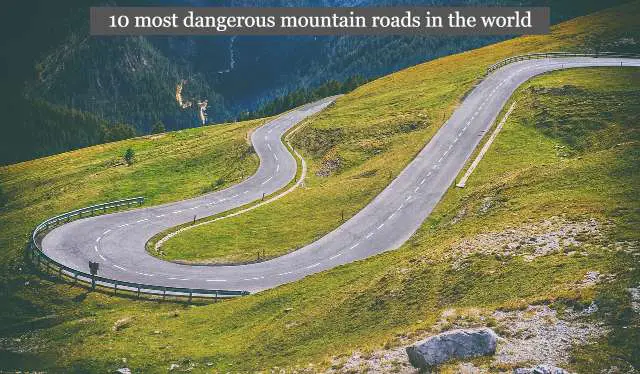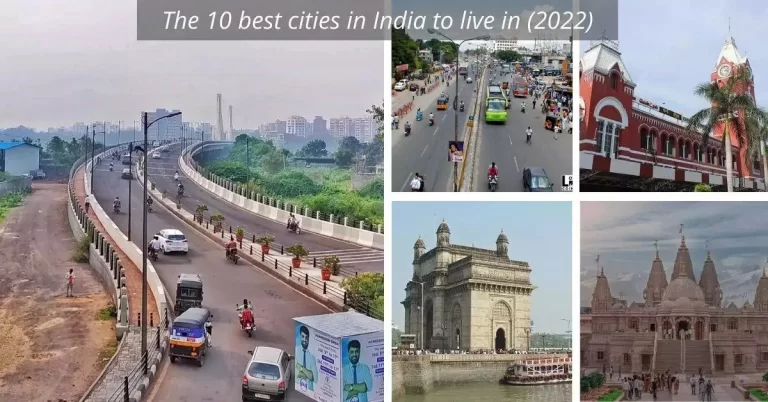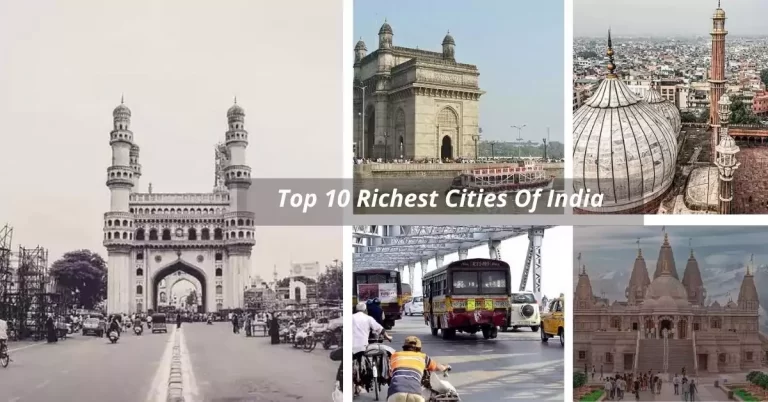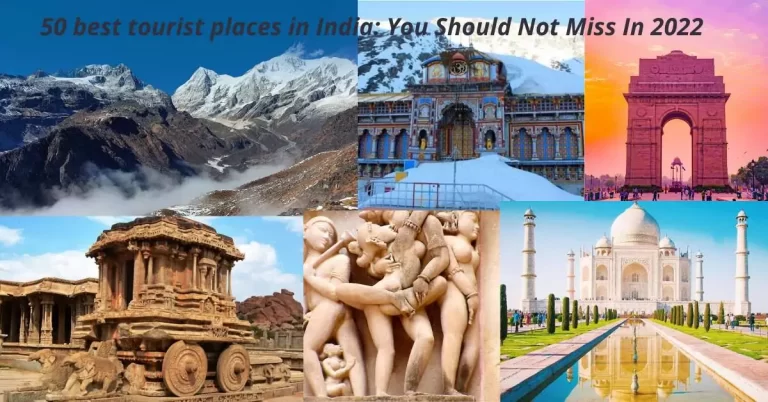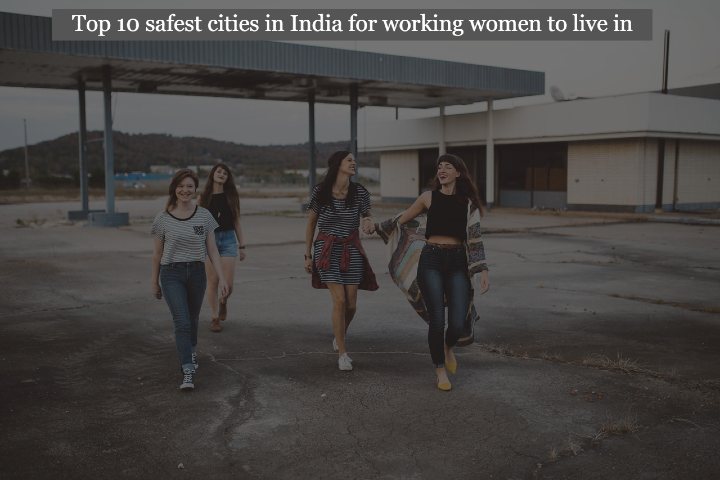Top 10 Ancient Cities of India You Must Visit Here
You must have read history books. Although this may sound disturbing to many of you, you do not need to open your books to know the history of India. From the revered places of Dwarka to the caves of Hampi, the oldest cities of India have a proud history within themselves, be it the world’s first college or the first diamond mine. The cities of India tell the story of the rich culture and civilization of our country.

But are you aware of the fact that there are many Indian cities which have been continuously inhabited for more than 2000 years? If you also want to know about your city, then check this article carefully, it is a very interesting story related to ancient cities of India.
.
1. Dwarka
The city of Dwarka, which was established by Lord Krishna, is one of the ancient cities of India, although it is believed that the city of Dwarka, which was built by Shri Krishna, disappeared somewhere under the sea years ago. Well, whatever the facts and evidence say, people’s beliefs are still associated with Dwarka.
Researchers have uncovered some amazing things after examining the building material, pottery sculpture and human bones found at the Archaeological Site of Dwarka. According to him, Dwarka has a 9500-year-old city which makes it even older than the Sumerian Civilization.
The Dwarkadhish Temple of Dwarka, also known as the Jagat Mandir, is a revered temple for Hindus. You will be surprised to know that the first of the twelve Jyotirlingas dedicated to Mahadev, Nageshwar Jyotirlinga is also established in Dwarka. Along with Badrinath, Jagannathpuri, and Rameshwaram, Dwarka is also one of the Char Dhams of India.
.
2. Puri
Puri is called “The city of Temples”. Here the temple of Lord Shri Jagannath, a revered temple of Hindus, is established. There are 24 festivals celebrated in the temple premises throughout the year, out of which 13 are the main festivals.
It would be fair to say that about 80 percent of Puri’s economy comes from temples and pilgrims. It is a matter of pride for us that this kitchen of Jagannath Temple is the largest kitchen in the world. If you go to Puri, then definitely visit the famous Konark Sun Temple located 35 km away.
Although the reign of kings has ended in India, you might not know that even today only the descendants of Gajapati perform the ritual functions of the temple. Thousands of years have passed but Hindus have the same faith and reverence for Puri Dham as they were years ago. The people of India do not go to Paris, but they definitely go on the journey of four dhams in their life.
.
3. Thanjavur
This Thanjavur city located in Tamil Nadu is one of the famous tourist spots in Tamil Nadu. The city may be known for its popular Shiva temple, but according to Hindu mythological beliefs, it was named Thanjavur because of Tanjan Asura. Its history is very old which links it to the Sangam period.
However, Thanjavur developed a lot during the Chola dynasty. At one time it was the capital of Chola’s rule. After the fall of the Chola dynasty, the city was ruled by Pandya, Madurai Nayak, Thanjavur Nayaks, Maratha Nayaks, and finally by the British. Before leaving, the king of the Chola Empire established the Brihadisvara temple in the 10th century. Which is today one of the UNESCO World Heritage Sites.
.
4. Hampi
Hampi maybe today a village full of old temples and ruins, but years ago it was the most prosperous city in India. A small village in the Bellary region of Karnataka was at the zenith of prosperity under the Vijayanagara rule of King Krishna Devaraya. Hampi used to be the capital of the Vijayanagara Empire.
You might not know that by the 14th century, Hampi had become the largest city of the medieval era after Beijing. Along with this, traders from Persia and Portugal used to come here to do business. Hampi was not only a major part of the Vijayanagara Empire but it is also mentioned earlier in the Ramayana and Puranas as Pampa Devi Temple. It is still home to the Virupaksha Shiva temple, a famous Hindu pilgrimage site.
Friends, this thought must have come to your mind that despite such a rich history, why today Hampi is just a pile of ruins. This is because the Vijayanagara Empire was badly defeated in the battle with the Mughals in 1565 and the Mughal army ruined this flourishing city. Today it has the status of a World Heritage Site by UNESCO, but if it was in its original form, then it would have been something else.
.
5. Ujjain
Ujjain city full of Hindu pilgrims is one of the main religious places of India. It is home to many new and old temples. Ujjain city of Madhya Pradesh is situated on the banks of river Shipra, if you have not seen Kumbh Mela while staying in India, then what have you seen, Kumbh Mela, which is held once in 12 years, is held in Allahabad, Haridwar, Nashik as well as in Ujjain. Lakhs of people and Aghori sadhus come from different parts of the country and become a part of this Kumbh Mela. The crowd of Kumbh Mela is worth seeing.
Mahakaleshwar Jyotirlinga of Lord Shiva is established in the middle of the city of Ujjain and talking about its history, it used to be the capital of the Avanti kingdom of 600 BC and till the 19th century, it was a flourishing city. After this, the British instead started paying more attention to the development of Indore. However, Ujjain is also included in the 100 cities of Prime Minister Modi’s Smart City Mission, and the initiative to make it a smart city has been started.
.
6. Ayodhya
If Ram Rajya was anywhere, it was in Ayodhya. Ayodhya, the holy city of Shri Ram, is one of the ancient cities of India. Ayodhya became the birthplace of “Maryada Purushottam Shri Ram” for ages, but it developed into a prosperous city during the period of the Gupta dynasty in about the fourth or fifth century.
Ayodhya is a very important city not only for the Hindus but also for the people of Buddhism and Jainism. It is believed that Gautam Buddha and Mahavir Swami spent some years of their life here. According to Jain texts, five Tirthankaras were born in Ayodhya itself.
It is believed that as a memory of the birthplace of Ram Ji, a Ram temple was located in Ayodhya, which Babar demolished and made the Babri Masjid. In 1992, there was a lot of opposition by the Hindus and there was a demand to rebuild the Babri Masjid to build a Ram temple. For many years this issue remained in controversy and in 2019 an order was given to build a Ram temple at that place. The construction of the Ram temple was started in August 2020.
.
7. Madurai
According to the 2011 census, Madurai has been considered the third-largest urban agglomeration of Tamil Nadu. It is also called “Thoonga Nagaram” i.e. the city that never sleeps, although the history of this city starts from the third century, which was mentioned by Kautilya (also known as Chanakya), the minister of Maurya emperor Chandragupta. The city saw the rise and fall of several empires.
Madurai was ruled by the Pandyas, Cholas, Madurai Sultanate, Vijayanagara Empire, and the British for many years. Along with this, there are many places of interest in this city, of which Meenakshi Temple and Tirumalai Nayak Palace are the most famous that is one of the major ancient cities of India which has retained its prominence till date.
.
8. Varanasi
Friends, we all know the paan of Banaras and the value of Ganga Aarti there. It is believed that this holy city of Kashi in Uttar Pradesh was built by Lord Shiva himself, so it is a very revered city for Hindus.
However, if the archaeologist is to be believed, then these Old cities of India are about 3000 years old. The founder of the Ghadavala dynasty ruled Varanasi till 1090. He built his second capital in 1090. After the Tala kingdom, the Chero dynasty ruled Varanasi until the Mughal rule came.
If you ever go to Banaras, you will find many temples 500 to 1000 years old there. Moreover, experiencing the aarti on the banks of the Ganges is no less than a pilgrimage. Varanasi Kashi or Banaras by whatever name it is called, but it is definitely a unique mirror of Indian culture and civilization.
.
9. Sanchi
The description of Sanchi Stupa is definitely found in every history book. And why not? The Sanchi Stupa of Sanchi was built by the great emperor of India, Ashoka, India was at the peak of its prosperity in the kingdom of Ashoka. Emperor Ashoka brought many such changes. Which the rulers of this time cannot even imagine. For your information, let us tell you that Sanchi Stupa is one of the oldest structures in the world. Its center was built on the relics of Lord Buddha, so it is a very important place for the followers of Buddhism.
The mention of this city in Madhya Pradesh is found in the Sangam Empire in the 1st century BC as well as the Maurya Empire in the 3rd century BC. The birthplace of Devi, the wife of Emperor Ashoka, was Sanchi and she was also married in Sanchi.
.
10. Nalanda
The world’s first and largest university was built in the Nalanda city of Bihar. Nalanda was an important part of Magadha. It is believed that Lord Buddha preached to his followers while sitting under a mango tree. Along with this, Mahavir Swami had spent 14 Sawans in Nalanda.
If you look at the ancient history of Nalanda, in the third century, Emperor Ashoka built a grand temple in Nalanda. Nalanda University was founded by King Kumaragupta in the fifth century. In this university, 2000 teachers and more than 10 thousand students used to come and study from different places of the world. This university, which lasted for more than 800 years, was an indicator of excellent knowledge of India.
However, three attempts were made to ruin it. Twice it was rebuilt and the third time it was completely demolished by Bakhtiyar Khilji and its huge library was also burnt. The once-high school has now become a pile of ruins.

